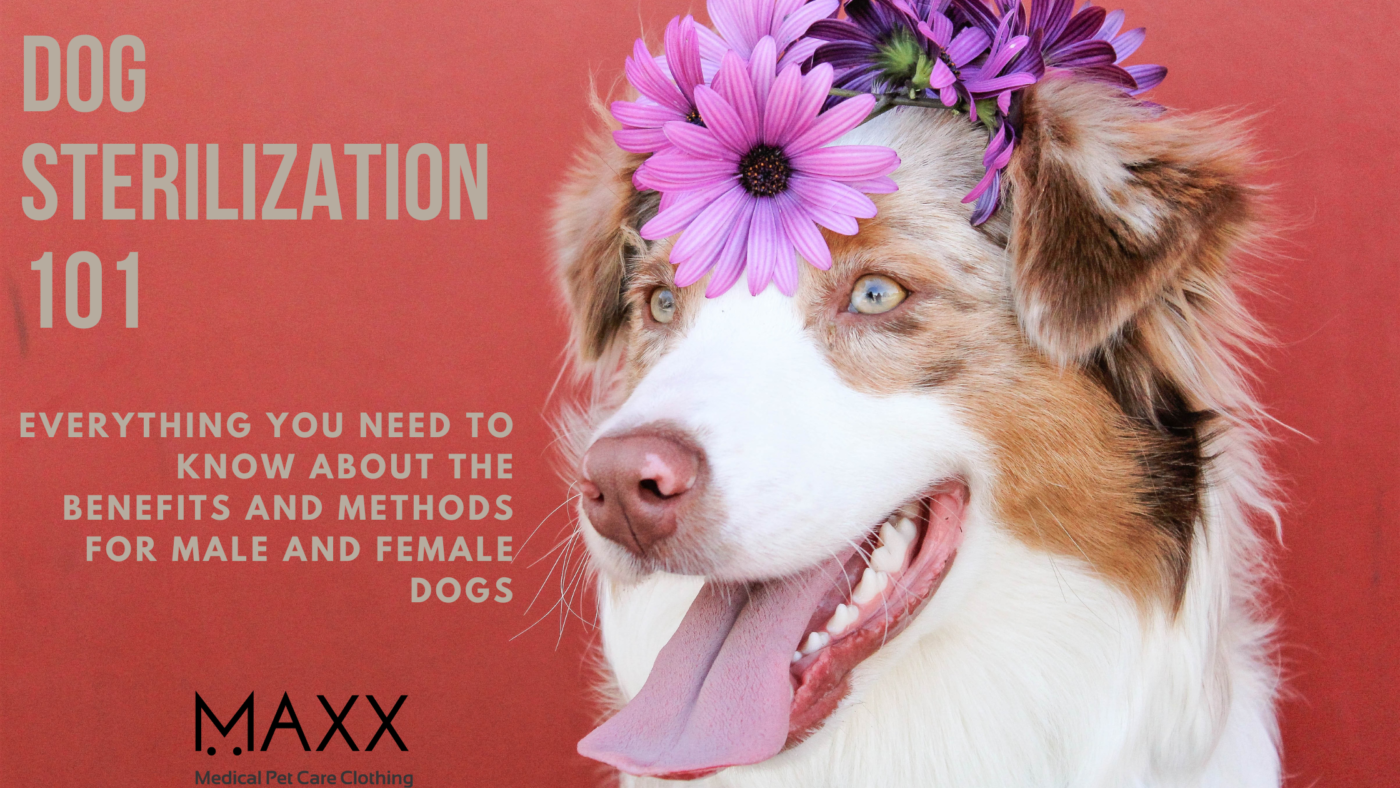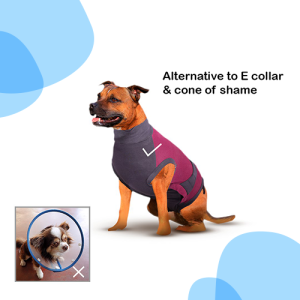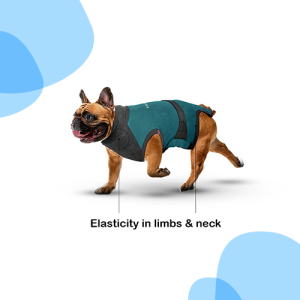MAXX Pet Blogs
Dog Sterilization 101: Everything You Need to Know About the Benefits and Methods for Male and Female Dogs
Dog sterilization is a safe
INTRODUCTION
If you are a responsible pet owner, you might be considering sterilization for your dog.
Sterilization, also known as spaying or neutering, is a surgical procedure that removes a dog’s reproductive organs to prevent them from reproducing.
In this article, we will cover everything you need to know about dog sterilization, including the benefits, and research, methods for male and female dogs, and tips for aftercare.

The Benefits of Dog Sterilization
There are several benefits to sterilizing your dog.
- First and foremost, sterilization can prevent unwanted litters.
- This is particularly important if you cannot afford to take care of puppies or find homes for them.
- Sterilization can also reduce the risk of certain health problems, such as uterine infections and testicular cancer.
- In addition to these benefits, sterilization can also improve your dog’s behavior.
- Dogs that have been sterilized are less likely to roam, mark their territory, or exhibit aggressive behavior.
- Sterilization can also reduce the likelihood of certain health problems, such as mammary tumors in female dogs.

maxx.pet
Methods for Male Dogs
There are two main methods for sterilizing male dogs:
- castration and vasectomy.
- Castration is the surgical removal of the testicles, which prevents the dog from producing sperm.
- Vasectomy, on the other hand, involves cutting the vas deferens, which carries sperm from the testicles to the urethra. This method prevents the dog from impregnating a female, but he will still produce semen.
- Castration is the more common method for sterilizing male dogs. It is a relatively simple procedure that can be done under general anesthesia. The recovery time is typically only a few days, and most dogs are back to their normal activities within a week.
Methods for Female Dogs
There are also two main methods for sterilizing female dogs:
- spaying and tubal ligation.
- Spaying is the surgical removal of the ovaries and uterus, which prevents the dog from going into heat and reproducing.
- Tubal ligation, on the other hand, involves tying or blocking the fallopian tubes, which prevents the eggs from traveling to the uterus.
- This method allows the dog to go into heat and mate, but she will not become pregnant.
- Spaying is the more common method for sterilizing female dogs.
- It is a more invasive procedure than castration, but it is still relatively simple and can be done under general anesthesia.
- The recovery time is typically a few days, and most dogs are back to their normal activities within a week.
Tips for Aftercare
- After your dog has been sterilized, it is important to follow your veterinarian’s instructions for aftercare.
- Your dog may need to wear a surgical pet shirt ( medical pet care clothing ) to prevent them from licking or biting at the incision site.
- You may also need to limit your dog’s activity for a few days to prevent them from injuring themselves.
- Make sure to monitor the incision site for any signs of infection, such as redness, swelling, or discharge.
Conclusion
Dog sterilization is a safe and effective way to prevent unwanted litters and improve your dog’s health and behavior.
There are several methods for sterilizing male and female dogs, and each method has its own benefits and drawbacks.
If you are considering sterilization for your dog, make sure to talk to your veterinarian about the best option for your pet. With proper aftercare, your dog can recover quickly and enjoy a happier, healthier life.
FREQUENTLY ASKED QUESTIONS
- What age should I sterilize my dog? It is generally recommended to sterilize dogs between the ages of 6 and 12 months. However, your veterinarian can help you determine the best time based on your dog’s breed, size, and overall health.
- Is dog sterilization safe? Yes, sterilization is a safe surgical procedure that is commonly performed on dogs. However, like any surgery, there is a small risk of complications. Your veterinarian can discuss the risks and benefits with you.
- Will my dog gain weight after sterilization? Some dogs may gain weight after sterilization, but this can usually be prevented with a healthy diet and exercise routine. Your veterinarian can provide recommendations for your dog’s specific needs.
- Will sterilization change my dog’s behavior? Sterilization can improve certain behaviors in dogs, such as reducing aggression and territorial marking. However, it will not change your dog’s personality or energy level.
- How long does it take for my dog to recover from sterilization? The recovery time for sterilization varies depending on the method used and your dog’s individual needs. In general, dogs can resume their normal activities within a week or two after surgery, but you should follow your veterinarian’s instructions for aftercare.




